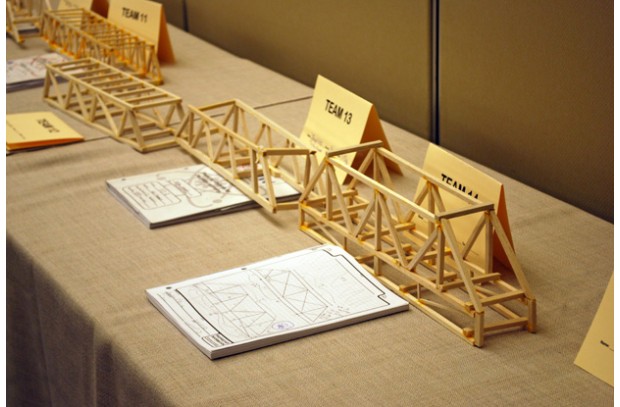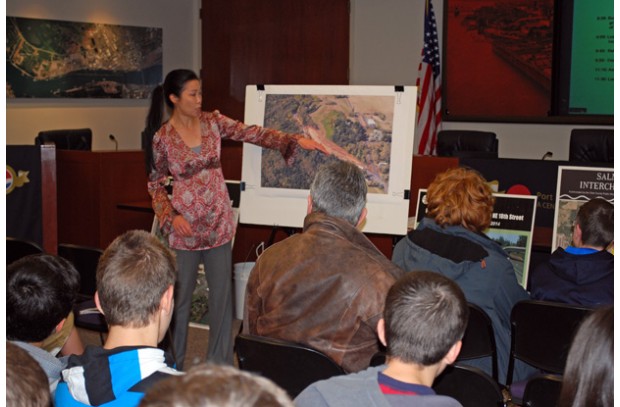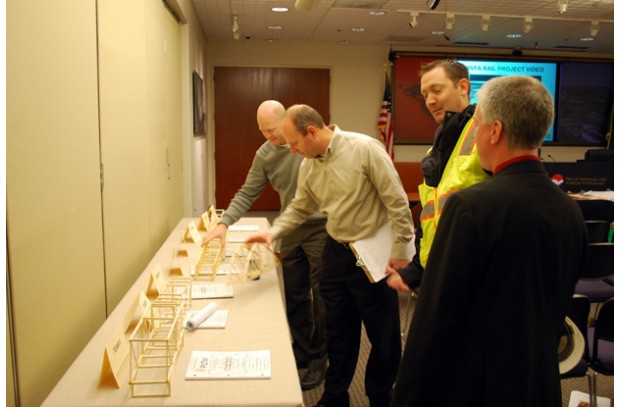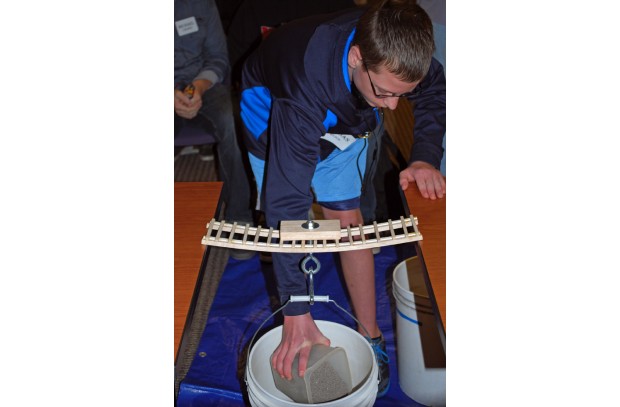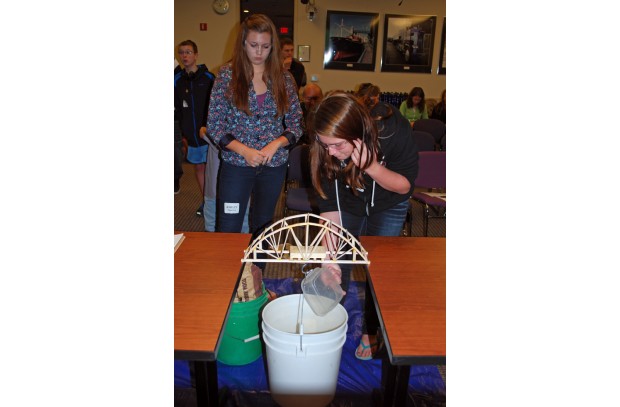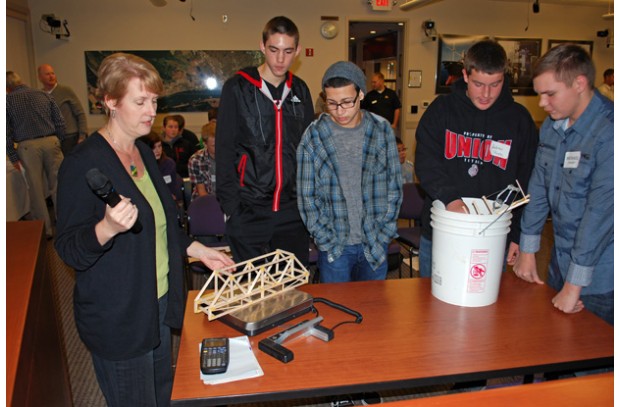Building Bridges
Students from Union High School, Evergreen High School, and Mountain View High School competed in a model bridge building competition at the Port of Vancouver USA on Thursday, November 15. Teams from each class tested the strength of their bridges by adding sand to the point of collapse. Professional engineers from the Port of Vancouver and the Washington State Department of Transportation were present for the competition and offered guidance and personal insights on what it’s like to be actively practicing in the profession.
Teams of two took turns testing the strength of their bridges by hanging buckets from the structure and adding sand until the bridge collapsed. The weight of each bridge was tested against the amount of sand held, resulting in a final efficiency rating. Students Dakota Webster and Quinn Beatty from Union High School were declared winners after their bridge held 33.4 pounds and received 607.6 efficiency.
The Port of Vancouver was chosen to host the competition because two unique bridge projects are currently under construction on port property, both showcasing the impressive work engineers are accomplishing in our community.
The first is the Gateway Avenue Grade Separation project, which builds an overpass that separates vehicle traffic from train traffic below. The new bridge will allow cars and trucks to travel over the port’s growing internal rail corridor and more easily access two of the port’s five marine terminals. The existing Gateway Avenue will be partially realigned to the west and elevated over the railroad tracks, resulting in an S-shaped roadway.
The bridge part of the project will cross two sets of rail tracks, but instead of building two separate bridges, an innovative engineering approach will result in one large bridge being constructed with a middle support column, resulting in a three-span bridge. In addition, soil was used to build structural earth walls on either side of the bridge, which help secure the structure in the event of an earthquake or other natural disaster.
The second bridge project underway at the port is called “The Trench,” and creates a new rail entrance into the port. When the new entrance is complete, trains will no longer have to cross over the BNSF and Union Pacific Railroad’s north/south mainline. Instead, trains will travel in a watertight trench under the Columbia River Rail Bridge and along the north bank of the Columbia River. The trench will be supported by 410 steel girders that are driven as far as 120 feet into the ground using a vibratory hammer. What makes this project special is that it offers an innovative engineering solution to the challenge of finding a way to bring trains safely into the port, even when river levels are high.
Port of Vancouver engineers took students on a tour of both bridge structures and informed them of the processes used to build each structure. The hope from both organizations is that students will become more aware of career opportunities and that the day generated a sense of excitement surrounding the field of engineering.
« See all stories
